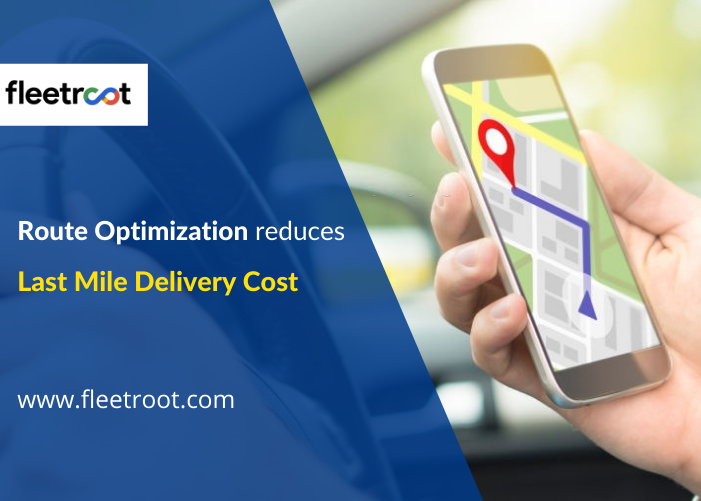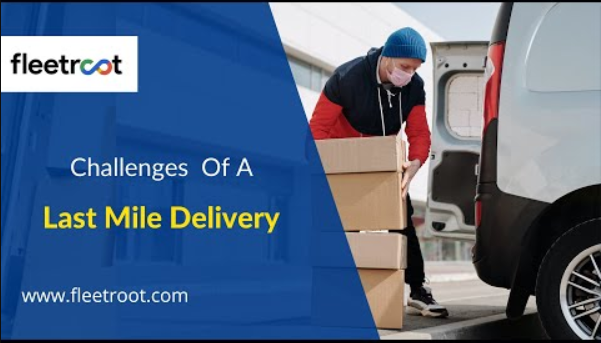Summary
Companies have quickly realized that in today’s globally competitive world with ever-increasing pressure on operations and costs, acing the last-mile delivery logistics is a great way to gain a sustainable competitive advantage and create customer satisfaction.
However, this is easier said than done and requires judicious use of resources, technology, and strong management supervision.
Last-Mile Delivery: what is it, really?
As the name itself suggests, “Last Mile Delivery”, is – literally! – the last leg of the supply chain and the delivery process. It focuses on the movement of cargo from a warehouse or fulfillment center to its final-delivery destination i.e. the customer’s address, and, the sole objective of last-mile delivery is to complete the delivery as fast as possible.
However, the burgeoning e-commerce trade – coupled with the “instant gratification mindset” of today’s customers – poses ever-increasing challenges for last-mile companies.
How does Last-Mile Delivery provide a company with a competitive advantage?
In today’s world of ever-increasing competition and innovation, companies are quickly realizing that acing the last-mile delivery conundrum is a great way of gaining a differential advantage over competitors. However, it is easier said than done since this requires Logistics Companies to maintain and manage a transparent and efficient delivery operation, one that is fast, affordable, and smooth.
Last-Mile Delivery: constantly faced with severe challenges.
Last-mile delivery is forever faced with significant challenges. More importantly, given the very nature of its scope, scale, and nature of operations, these challenges will forever remain. Some are listed below:
1) Rapidly evolving customer expectations: driven by the e-commerce giants, today’s customer wants fast and efficient delivery. Options like Same-Day Delivery and 24-hr delivery are now increasingly the norm. And, the responsibility of meeting these expectations has come to rest with the Logistics and Distribution companies and the sellers.
2) Dependent on ever-changing external and internal variables: due to myriad reasons including traffic congestion, incorrect data (address, name, order details, price), whimsical customers and their changing schedules, difficulty in accessing remote or dangerous locations, the delivery operation are under constant pressure to maintain their projected schedules.
3) Fuel consumption: Nearly 25-30% of last-mile costs are due to fuel consumption. Factors mentioned above, as well as poor scheduling amounting to more miles covered constantly, add to fuel costs
4) Visibility and transparency: to manage today’s complex delivery networks, it is important for Transport Managers to maintain a constant vigil on the progress of the deliveries. This enables them to monitor the process as well as keep the customer updated.
5) Customer friction: Managing and responding satisfactorily to the ever-increasing demands of today’s customer inquiries is a leading source of friction between delivery teams and customers. Customers are constantly demanding to know where their deliveries are, several have myriad special demands, often change their order details, and their delivery window timings (e.g. leave it on the steps). Using the correct technology and maintaining real-time communication is the solution to prevent any possible friction.
Last-Mile Delivery: how companies can gain sustainable competitive advantage.
Optimizing last-mile operations is imperative to managing a delivery business by differentiating oneself from the competition and profitably growing the business. Given below are 6 top ways of acing the last-mile:
1) Maintaining visibility during the delivery process: The consumer of today has evolved. Not only does he need to be given several options for order fulfillment but he also demands that he be kept informed in real-time about the progress of his parcel. This adds to the pressure on last-mile logistics since Fleet Managers have to maintain a constant vigil on deliveries and also make sure the updated statuses are being communicated to the customers.
Remember, you must also take into consideration that deliveries are forever subject to changing variables (e.g. traffic jams, poor weather, roadblocks, etc.) and could be delayed without prior notice.
Using modern Route Optimization software is a great tool here – not only does it allow Fleet Managers to maintain visibility and monitor delivery progress at all times, but it also allows them to re-route in real-time, as and when the need arises.
2) 3PL (3rd Party Logistics) providers: Using 3PL providers is a great way of ensuring efficiency in last-mile logistics. Modern 3PL providers are large, resourceful companies that manage vast, complex logistics and distribution processes.
Such 3PL providers improve all aspects of a delivery operation, including logistics, warehouses, costs, speed of delivery, etc. However, you must choose a well-reputed and established company since the 3PL organically becomes the face of your company for your customers and you wouldn’t want a company sullying your reputation by missing deliveries, conducting themselves poorly (etc.)
3) Pick-up option: Offering customers the option to pick up their orders from a convenient nearby location of their choice is not only a good way to personalize the fulfillment option for your customers but also an effective method to reduce your last-mile delivery costs.
A well-distributed network of fulfillment centers and warehouses will ensure proximity to customers and you could minimize the number of trips that your vehicles and drivers need to make for the last-mile delivery.
Data shows that customers are happy to use this option, particularly for lightweight products like handheld gadgets and electronics, and apparel. Even though customers rarely use this option for the bulkier orders, it would still reduce the number of deliveries considerably and ease the pressure of cost and logistics (e.g. during peak periods) on your last-mile logistics.
4) Elaborate warehousing network: maintaining a suitably distributed network of warehouses and fulfillment centers would ensure that distances that need to be covered by your drivers and vehicles for executing the last-mile delivery are kept as short as possible. Based on the area (urban, rural), the number of warehouses can be adjusted accordingly.
5) Ensure best practices for inventory management: Optimizing the process of inventory management, re-order levels, and using efficient methods like JIT (just-in-time) inventory is critical in achieving a high level of operational efficiency. Failing to do so would result in problems such as OOS (out-of-stock), high carrying costs, and failed deliveries. Such inefficiencies increase the cost of operations (not to mention creating irate customers!), all of which have negative ramifications on the business.
6) Data-analytics: Modern fleet management and delivery software systems are fuelled by advanced technology and use elaborate algorithms driven by AI (Artificial Intelligence) and ML (Machine Learning). A great advantage of such systems is that they digitize the entire process and can generate vast amounts of data that is available for analysis and insight.
This enables Transport Managers to optimize their last-mile logistics in several ways:
• Optimize routes for efficiency, speed, and cost
• Maintain customized data about customer delivery windows and constraints
• Use of GPS for updates on traffic conditions, weather, and road conditions
Conclusion: Unless your supply chain and logistics operations are able to meet evolving customer needs, you will fail to create a healthy company reputation, loyal customers, and run a sustainable business. Using a modern tool like last mile delivery management software to achieve this is the way to go.




